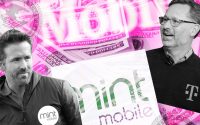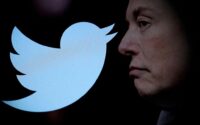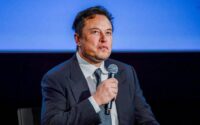Tesla stock surges over 10% after Morgan Stanley upgrade
Tesla’s rallied more than 10% on Monday after Morgan Stanley predicted the electric vehicle maker’s Dojo supercomputer would add up to $500 billion to the company’s market value.
Tesla was enjoying a share price of $273.94 as of Monday afternoon — a figure that has already more than doubled so far this year — after a group of Morgan Stanley analysts led by Adam Jonas upgraded the stock to “overweight” from “equal-weight.”
The “overweight” rating means Morgan Stanley’s bankers believe Tesla’s stock price is about to outperform its industry, and usually indicates to investors that they should buy up more shares.
The investment bank also raised Tesla’s 12-month price target from $250 per share to $400 per share — a Wall Street-high.
Morgan Stanley’s bullishness is driven by the potential of the Elon Musk-owned brand’s Dojo supercomputer — which makes use of thousands of GPU chips from Nvidia and is used to train Tesla’s self-driving features.
“The same forces that have driven AWS [Amazon Web Services] to reach 70% of Amazon total EBIT can work at Tesla, in our view, opening up new addressable markets that extend well beyond selling vehicles at a fixed price. The catalyst? Dojo, Tesla’s customer supercomputing effort in the works for the past 5 years,” Jonas wrote.


Dojo tech could also prove to be immensely valuable in the adoption of robotaxis and network services, bringing Tesla’s current market value of $853.34 billion over the $1.3 trillion mark, said Morgan Stanley, which has been a key advisory firm for Musk, including in his $44 billion deal to purchase Twitter, now known as X.
Despite delays and technical problems, Jonas still said: “The more we looked at Dojo, the more we realized the potential for underappreciated value in the stock.”
Tesla market cap sits about 60% way from Morgan Stanley’s target, according to Bloomberg, meaning Tesla’s stock would have to close near its previous record high of $409.97, which it achieved in November 2021.
Dojo may put Tesla at “an asymmetric advantage,” said Jonas, meaning software and services could become the most valuable thing Tesla has to offer, though Musk has yet to deliver on the compelling new self-driving tech he’s promised.

Last month, Musk was seen cruising through the Bay Area testing the electric car’s new self-driving software, though the latest glitch in a long-running series of mishaps involving the company’s autopilot feature saw the 52-year-old nearly running a red light.
Musk livestreamed the 45-minute test drive on his social media platform, filming himself leaving Tesla headquarters in Palo Alto and using his finger to plan a route via a new version of the Full Self-Driving (FSD) software, v12.
For nearly 20 minutes, Musk boasts about not having had to intervene, saying “the drive has been butter smooth.”
The mogul, who also serves as SpaceX’s CEO, has described v12 as “mind-blowing.” Though it has yet to be released to the public, Musk has said that he hopes to bring the autonomous driving tech consumers on Artificial Intelligence Day in April 2024.
Representatives for Tesla and Morgan Stanley did not immediately respond to The Post’s request for comment.


